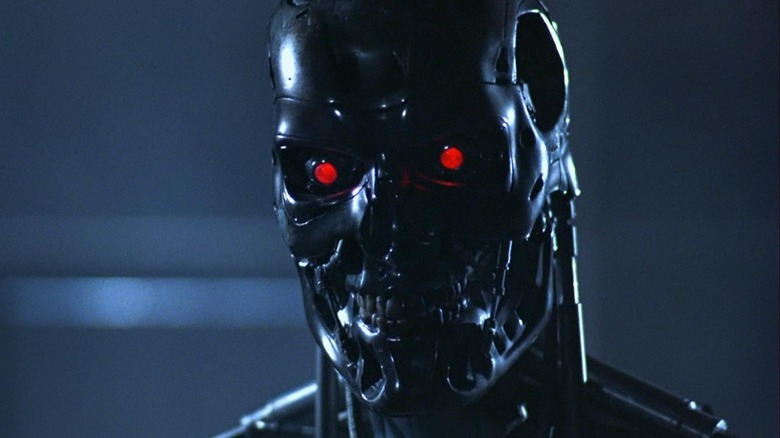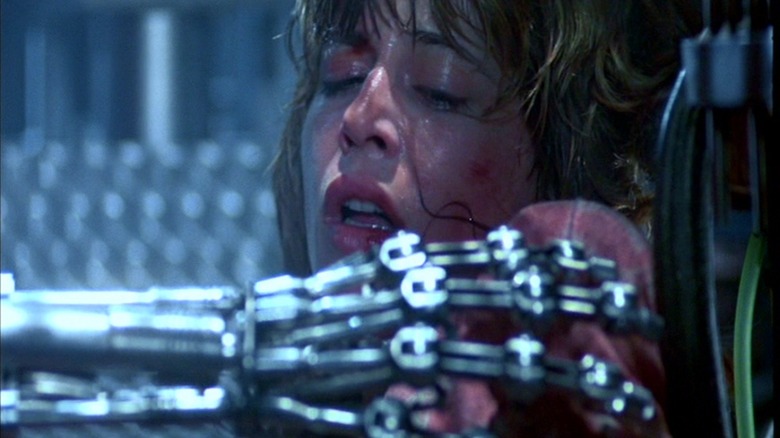Why The Terminator's Hydraulic Press Scene Is More Important Than You Realized
When James Cameron had a fever dream in 1982 about a metallic robot body crawling away from the scene of an explosion, his illness ended up launching one of the most influential and popular franchises in sci-fi history (via Business Insider). The young filmmaker, fresh off the making of "Piranha 2," used the nightmare as inspiration for his breakthrough: 1984's "The Terminator."
A story of a cyborg assassin (Arnold Schwarzenegger) sent back in time to kill the mother of mankind's savior, Sarah Connor (Linda Hamilton), "The Terminator" was a surprise sleeper hit (via Box Office Mojo) that made Austrian bodybuilder Schwarzenegger a movie star almost overnight. 1991's "Terminator 2: Judgment Day" was an even bigger smash, and the franchise was resurrected repeatedly in the 21st century.
Any fan of the series knows that the plot makes regular use of causal loops and time travel paradoxes. But they might not know why the climax of the first movie is especially relevant. Here's why the scene with the hydraulic press means everything to the events of "Terminator 2."
The Terminator's hand helps create Skynet and Judgment Day
By the end of the first "Terminator," the T-800's (Schwarzenegger) flesh has been ripped and burnt off, revealing the shiny, inhuman exoskeleton underneath. The machine is damaged but the torso still functions and, in a tense scene set in a factory, continues to pursue an exhausted Sarah (Hamilton). Finally, Sarah lures it into a nearby hydraulic press, crushing the cyborg and seemingly destroying it for good.
However, one part of the T-800 did survive: namely his right hand, as well as the remains of his central processor. "Terminator 2: Judgment Day" reveals that when the robot's remains are discovered, the advanced machinery actually fuels the research of Cyberdyne scientist Miles Dyson (Joe Morton), the man who inadvertently creates the conditions for Skynet to take over the world.
It's basically a complicated time travel paradox, where the existence of future technology in the present creates the conditions for it to exist later. But don't be surprised if you're confused. The chronology of the six "Terminator" films is, at best, extremely dense and complicated after nearly 40 years of retcons and multiple alternate timelines.

